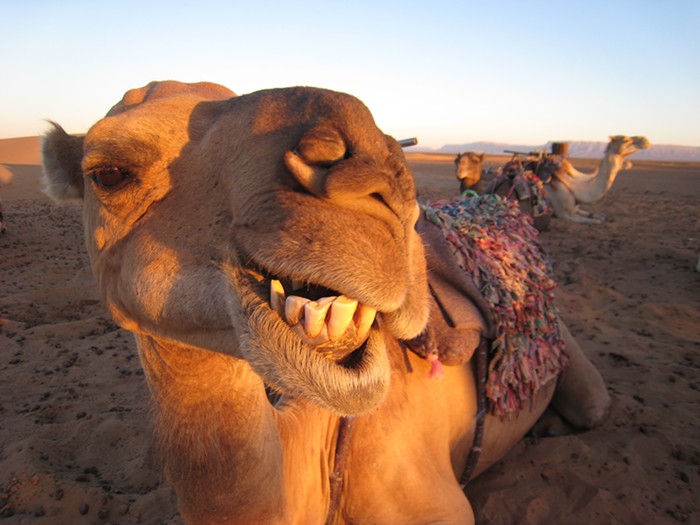Some people I know believe that there's a scant difference between an artist who tries to make metaphors and unique objects of beauty for the world around her, and an adman who employs a bevy of marketing tools to convince you to switch to Geico. Their rationale is that an emotionally stirring Nike commercial or clever Apple ad is just another form of creativity, and that distinctions between "art" and "advertising" are passé and meaningless. At my most generous, I hope these people are just being perverse for the sake of cleverness. My attitude is that advertisers are like liars: Just because they've gotten better at what they do doesn't mean they should be commended for it.
So what to make of Houston, an adman and artist who bills himself as "a logo, a brand, a group, or an individual"? His solo exhibition, Focus Group, is a terribly impressive installation of sculpture, photographs, and works on paper that explores the exploitation of the American West with the visual language of glossy design work. Most of the pieces are slick like no other art in town, and the production values and ambition are huge for a virtual unknown. But since the whole show is rife with issues of art and commerce, motives become suspect, and an insistence on "branding" overshadows the work on display.
The dominant theme of Focus Group is that the once-wild West has been co-opted, watered down, homogenized, and, of course, branded and put up for sale. The most literal illustration of this comes as a single photograph of a quintessential Western landscape: a towering butte, an infinite blue sky, red rocky dirt, scrub brush, and a ruler-flat highway. A road sign in the middleground provides the piece's title and punchline, reading simply: "Flavor Country." If the piece is somewhat obvious (I had to stop myself from describing it as a "Marlboro landscape"), it's aided tremendously by its own production values. The "Flavor Country" marker is an exact replica of a government-issue road sign, and this verisimilitude carries the piece.
The show's titular piece is a suite of designer bulls-eyes for shooting practice (complete with bullet holes). It's true that gun nuts and other alpha males love accessorizing as much as any uptown girl, so these pink and gray and swirly targets aren't too much of a stretch. Each is branded with the unshakable "Houston" logo, and one is comprised of nothing but.
The real attractions of Focus Group, though, are the sculptures. "Plenty for Everyone" pits two pickup truck toolboxes side by side. The lids are open, and their innards have been replaced by mirrors sporting cowboy and Indian illustrations, where the now-mythological enemies fire across the gap between the toolboxes in a never-ending gun battle. The mirrors are lined with rows of (a sugary substance meant to replicate) cocaine. The coke reference seems like a calculated move to make the art seem edgier, which it does, briefly. "Plenty for Everyone" is the show's most cosmopolitan and striking piece, but its messages and metaphors are murky: The cocaine makes it look cool, but feels hollow in the end (and that pesky logo makes yet another appearance).
So what, exactly, is Houston selling? Well, in keeping with the dominant advertising shift of the past 20 years, Houston is selling himself. Not in the "artist as whore" way (okay, maybe a tiny bit in that way), but in the "art as viral marketing" way. First, the ambiguous product: Houston. It's the old "Who is this Houston guy?" buzz technique that wouldn't work nearly as well with, say, "Matt Clark." Then there's the product launch, perfectly placed at the Oregon Biennial—the Super Bowl, if you will, of regional art. And just as every Super Bowl, there's a clever ad for a mysterious startup company whose function is intentionally obscured, and the subsequent weeks are filled with follow-up information: print ads, clarifying statements, interviews with curious journalists, and opportunities to sign up for six-month trial packages.
Plenty of artists are blatantly commercial and money hungry, and almost as many have toyed with advertising techniques in their work. But to call yourself a brand or a logo is irreparably crass, and I suspect this is Houston's point (although that doesn't make it go down any easier). Focus Group has all the makings of a truly great show. It also has logos on every piece of art and an artist who goes by a ridiculous moniker. The two elements are hard to reconcile: In the end, the art wins out, but it's a close call. At its most reductive, Focus Group is ultimately fascinating for the questions that it raises (and then tries to sell you).












